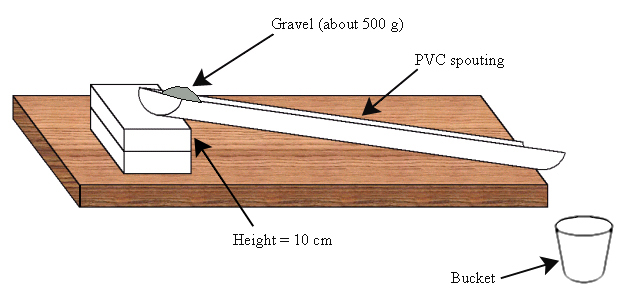A model river
This task is about using a model to investigate rivers.
How to do this task
- Your teacher has built a model of a river. A slip has occurred and some gravel has fallen into the river.
- Your teacher will pour some water onto the gravel. This represents water in the river.
- Watch carefully to see what happens when the water is poured onto the gravel, and as it flows down the spouting.


